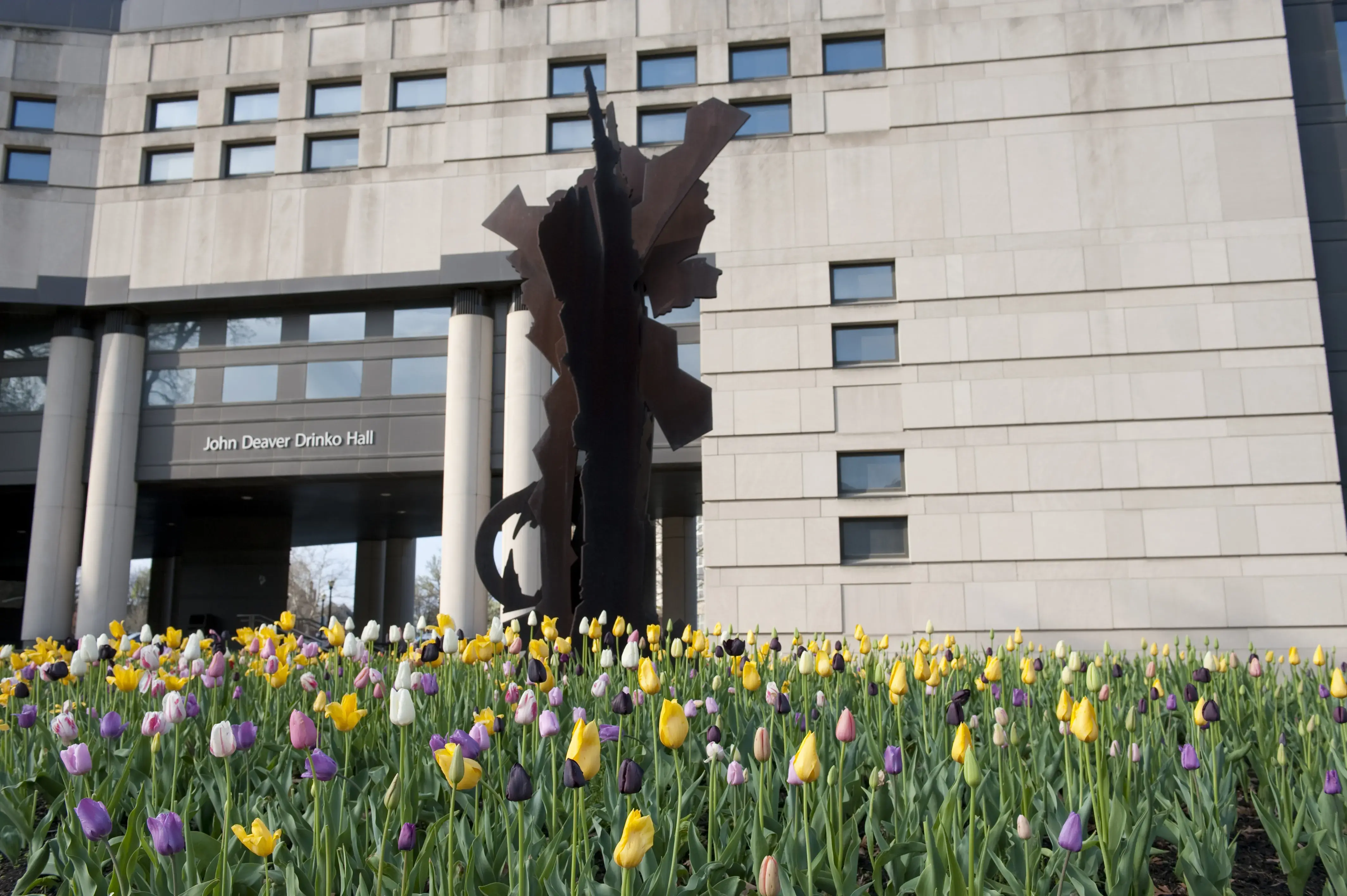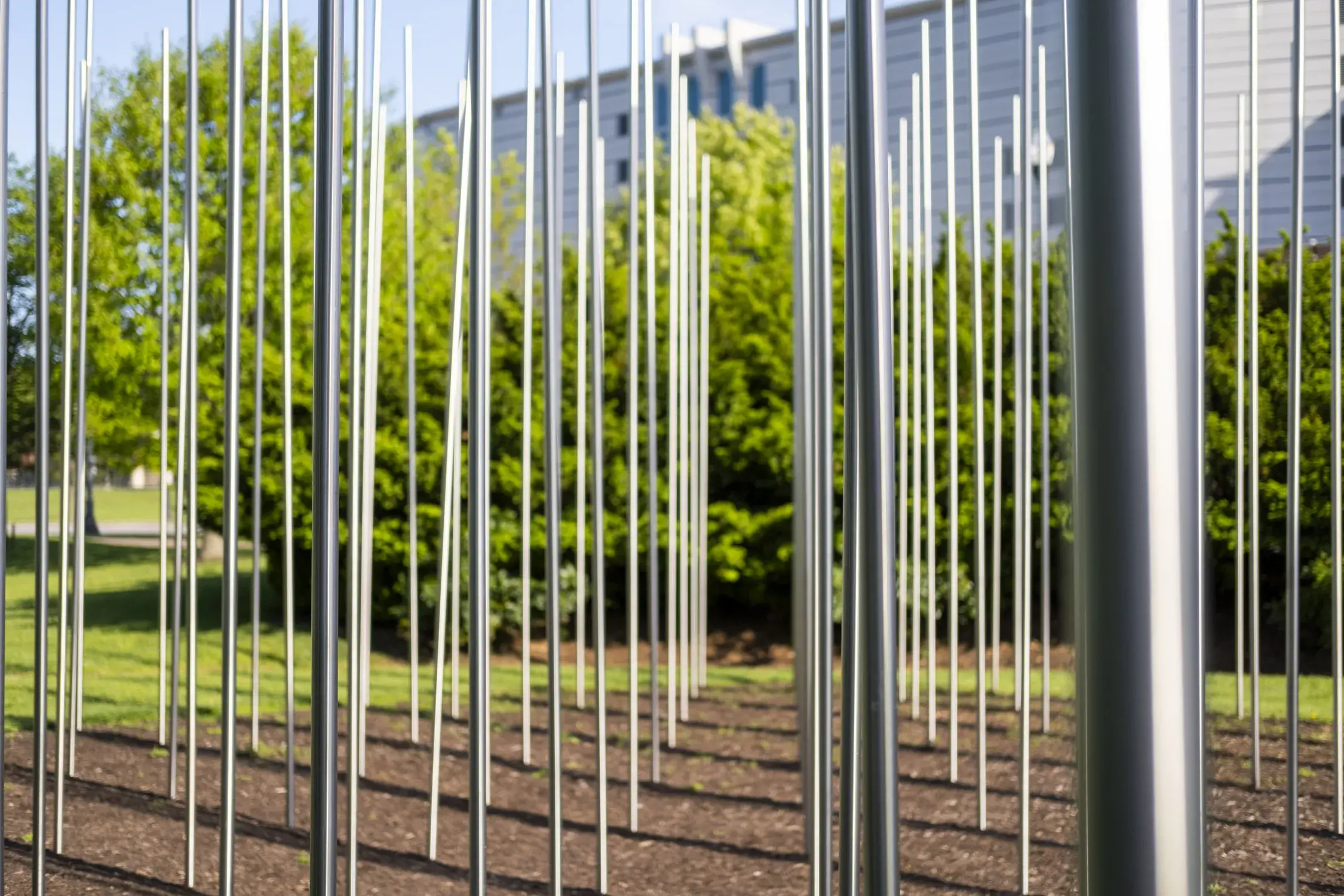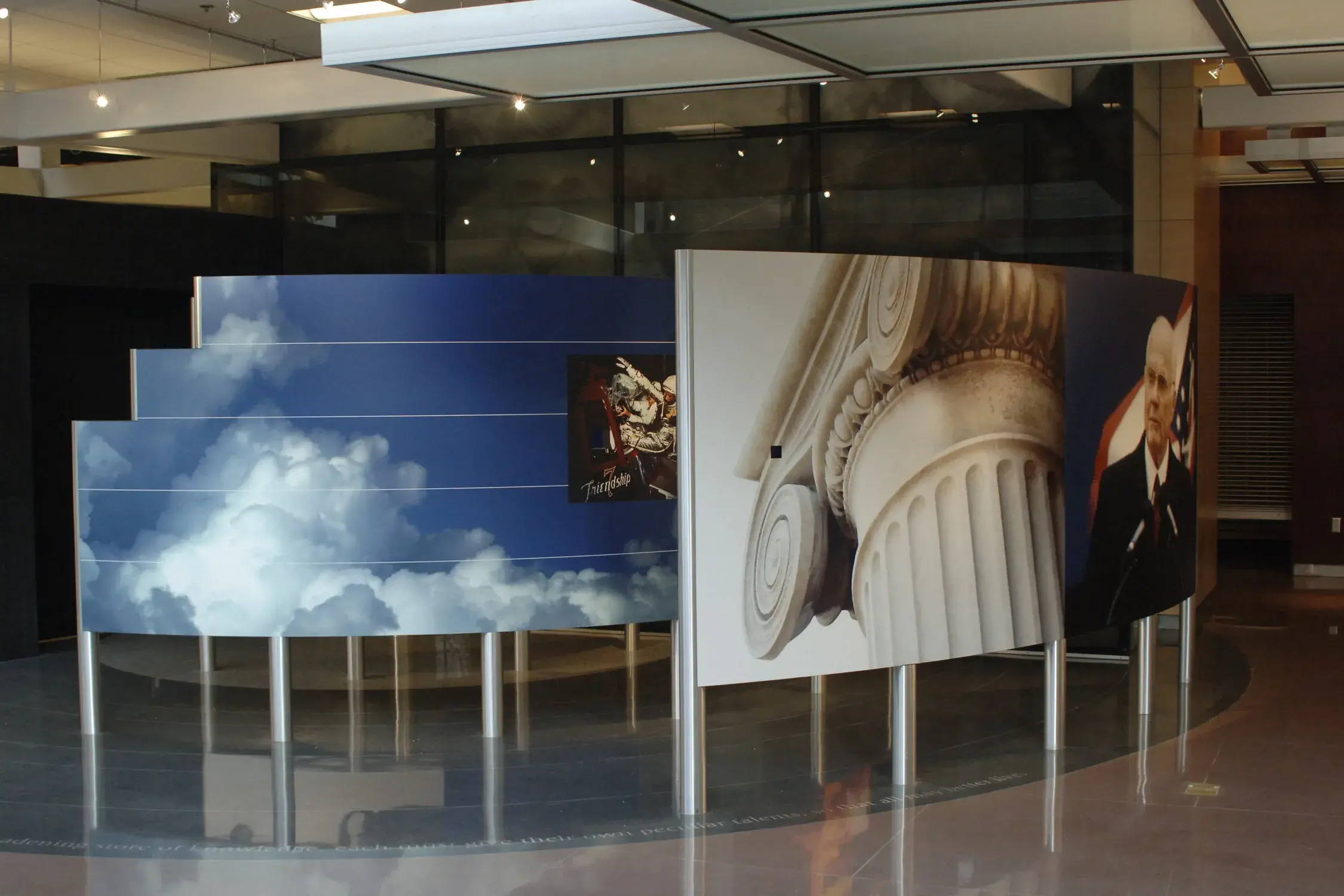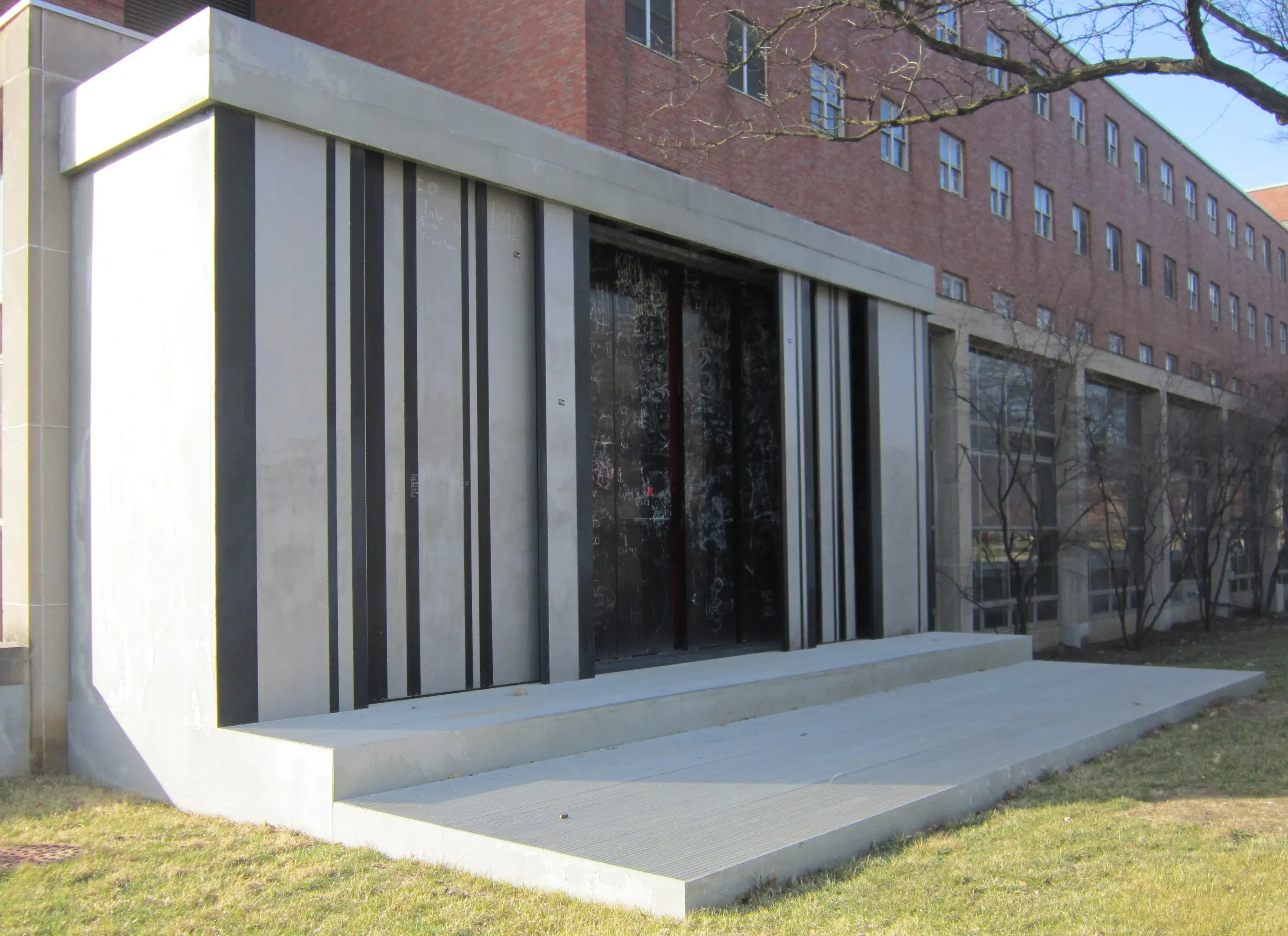
About the Art
Visitors to The Ohio State University may well mistake This Artwork by Mary Miss for a scarlet-and-gray architectural façade appended to Evans Laboratory, the 1960s-era academic building adjoining it to the west. Its sleek construction shares many of the materials and forms of more recent additions to campus architecture, and the resemblance is intentional.
Miss has made a career by questioning the boundaries between architecture and sculpture. The goal of This Artwork and others in her extensive corpus is to encourage viewers to “decode” their environment, giving more attention to the buildings that shape the movement of their bodies. In this case, viewers are also invited to participate in the environment’s reconfiguration. The work’s somewhat imposing façade belies a surprisingly flexible space in which interior panels can be rearranged to suit different kinds of use. The exterior metal panels can slide left or right, creating more open or enclosed spaces, while the black slate panels inside serve as chalkboards, like those within the nearby classrooms of Evans Lab. Over the years, hundreds, if not thousands, of people have availed themselves of the opportunity to leave their mark upon those surfaces.
Collection of The Ohio State University. Funded through the Ohio Percent for Art program.
Material
Mirrors, enamel panels, black chalkboards
Location
Outside of Evans Laboratory
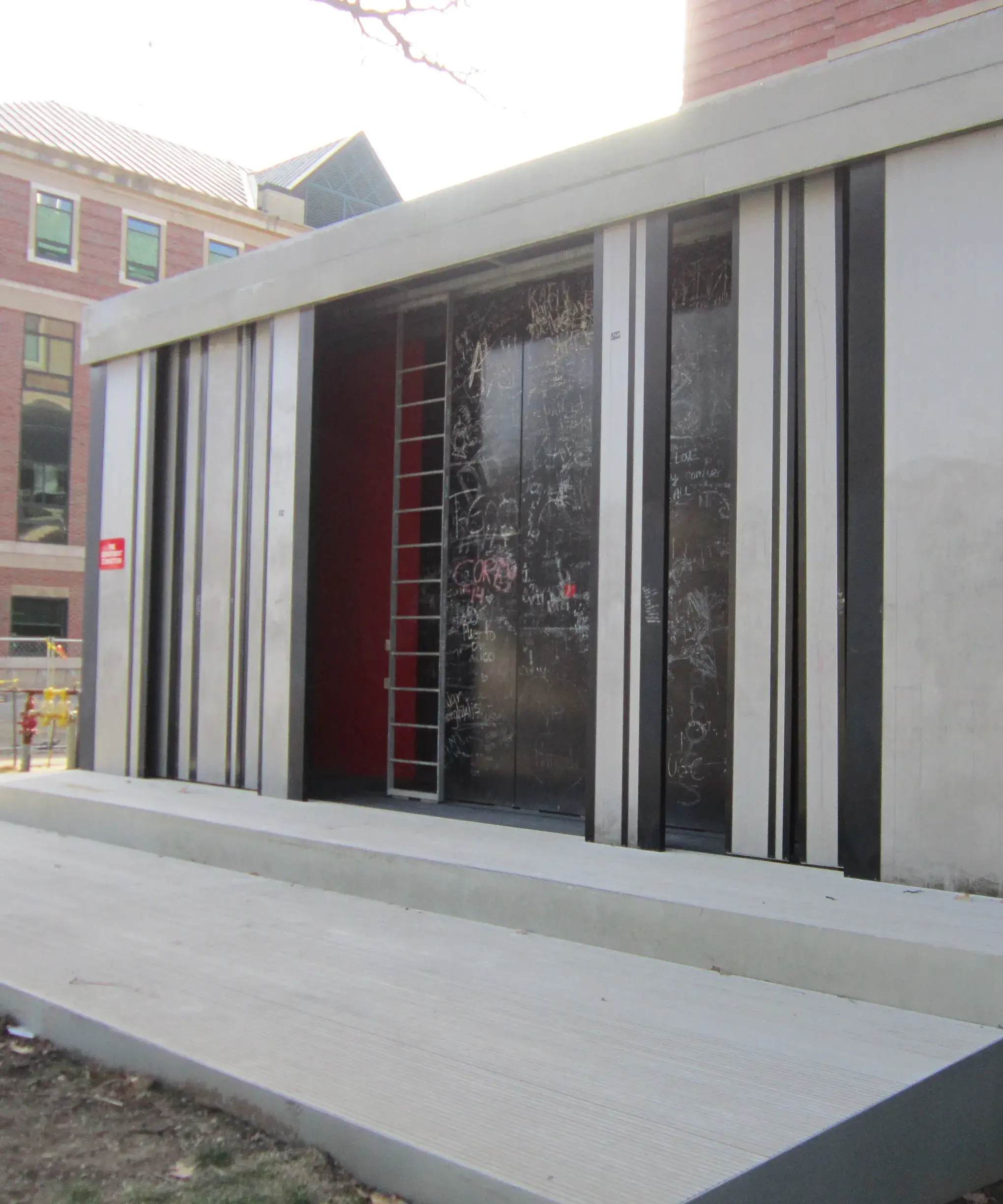
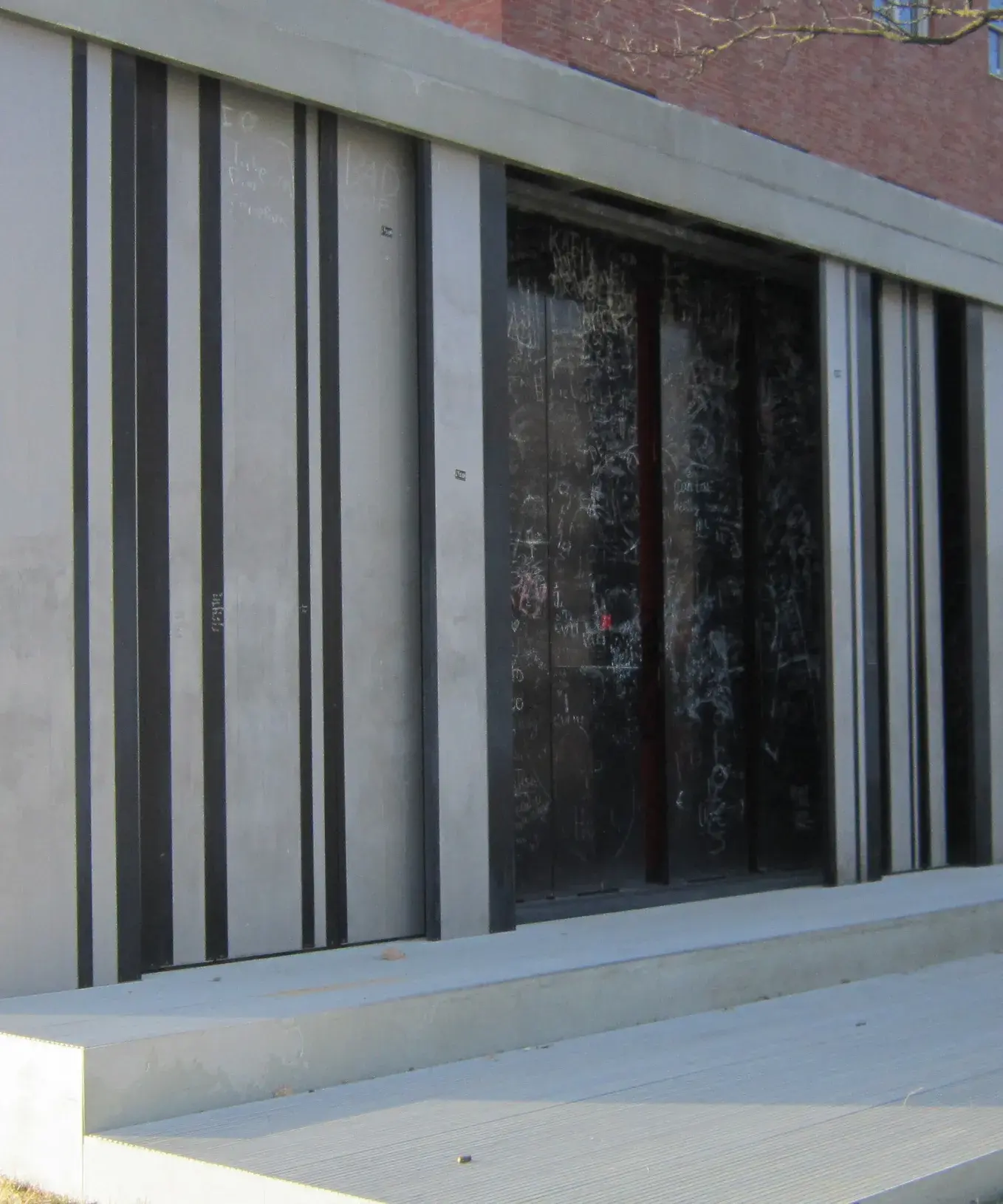
About the Artist
Mary Miss is an American artist and designer who proved to be a pivotal figure in the feminist art movement of the 1970s, co-founding Heresies: A Feminist Publication on Art and Politics. She is also a key figure in environmental and site-specific art history, two genres not fully articulated until the late 20th century. Environmental art is an expansive category connecting artist and viewer to the landscape and natural materials. It encompasses both works that use earth as their material and art that addresses issues of ecology or environmentalism. Site-specific art is art created for a pre-selected place. The artist considers the intended location not only for the work’s final installation but also during its initial conception and design. Both categories are integral to Miss’s oeuvre, which intersects with landscape design, engineering and urban planning. Her work is made with a specific location in mind and is meant to bring our attention to that site — its landscape, buildings and inhabitants in new and interesting ways.
